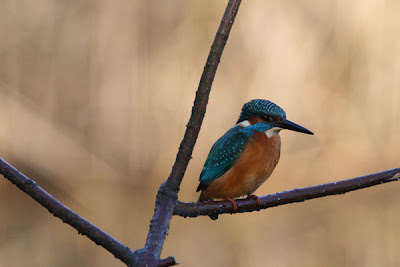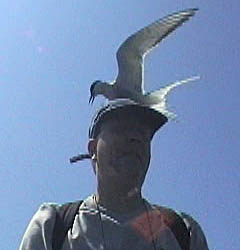It was particularly nice to find a spot with lots of moorhen and no coot squabbling away.


Down at the hide another moorhen was doing a black grouse impersonation in the sunshine (yes - real sun - in some places!), ..........
 whilst the mallards and kingfishers glowed.
whilst the mallards and kingfishers glowed.

 Annoyingly the kingfishers would perch quite near the hide, but always took their fish further afield - good views, but not photos - at least not at 600 pixels!
Annoyingly the kingfishers would perch quite near the hide, but always took their fish further afield - good views, but not photos - at least not at 600 pixels!Several jay joined the usual birds at the feeding station, ..........
 but sadly the water rail were largely conspicuous by their noisy calls, rather than views. I did get some glimpses on the far side of the pool, though, and when I first walked into the hide I found a rail was swimming in open water - a first for me. The light was poor and my shot rushed, to catch it before it reached dry land, but you can see what I mean.
but sadly the water rail were largely conspicuous by their noisy calls, rather than views. I did get some glimpses on the far side of the pool, though, and when I first walked into the hide I found a rail was swimming in open water - a first for me. The light was poor and my shot rushed, to catch it before it reached dry land, but you can see what I mean. Definitely worth another go, even the hassle of all those roadworks on the M4. The final bonus (well a bit of a mixed bonus really) was some pretty good views of a mink. It was down on the river bank at first, right below my feet so I saw it well, but the vegetation made any pictures impossible. When it crossed over it to the other bank I managed one quick snap though.
Definitely worth another go, even the hassle of all those roadworks on the M4. The final bonus (well a bit of a mixed bonus really) was some pretty good views of a mink. It was down on the river bank at first, right below my feet so I saw it well, but the vegetation made any pictures impossible. When it crossed over it to the other bank I managed one quick snap though.












 Next up the blue and great tits
Next up the blue and great tits

 then the chaffinches (one shot looks like one of those pottery hens - I found it amusing until I noticed the scaly leg that probably accounted for the posture. So many of the chaff's seem to have this.)
then the chaffinches (one shot looks like one of those pottery hens - I found it amusing until I noticed the scaly leg that probably accounted for the posture. So many of the chaff's seem to have this.)
 A blackbird called by and caught a patch of sunlight beautifully
A blackbird called by and caught a patch of sunlight beautifully One of my favourites - nuthatch - showed up as well. The last shot was taken at the feeding station at Beechenhurst, and it really did look like the bird had closed it's eyes and spat out the seed.
One of my favourites - nuthatch - showed up as well. The last shot was taken at the feeding station at Beechenhurst, and it really did look like the bird had closed it's eyes and spat out the seed.



 Perhaps the biggest surprise was the great spotted woodpecker - not so much that it showed, but that it came so close - I had a coat with a hood up, but no more of a hide than that.
Perhaps the biggest surprise was the great spotted woodpecker - not so much that it showed, but that it came so close - I had a coat with a hood up, but no more of a hide than that.

 In the same area I finally got a shot of it's cousin a green woodpecker - OK it's not great but it's the best I've managed, and to get this I was lying up against a tree smelling very strongly of piss!
In the same area I finally got a shot of it's cousin a green woodpecker - OK it's not great but it's the best I've managed, and to get this I was lying up against a tree smelling very strongly of piss! Round at Beechenhurst there were a few bramblings in with the chaffinches - with another couple of hours I expect I would have got some better shots, especially of the quite elusive male grubbing around in the leaves, but that's life.
Round at Beechenhurst there were a few bramblings in with the chaffinches - with another couple of hours I expect I would have got some better shots, especially of the quite elusive male grubbing around in the leaves, but that's life.


 I went chasing some more brambling this weekend near Pontypool (Pantygasseg to be precise), but didn't find them. There were some twitchy redwing perched in the treetops, then I finally thought I'd got a better shot from the car, but it's not so good after all. Shows the colours as well as I've ever seen though.
I went chasing some more brambling this weekend near Pontypool (Pantygasseg to be precise), but didn't find them. There were some twitchy redwing perched in the treetops, then I finally thought I'd got a better shot from the car, but it's not so good after all. Shows the colours as well as I've ever seen though.
















